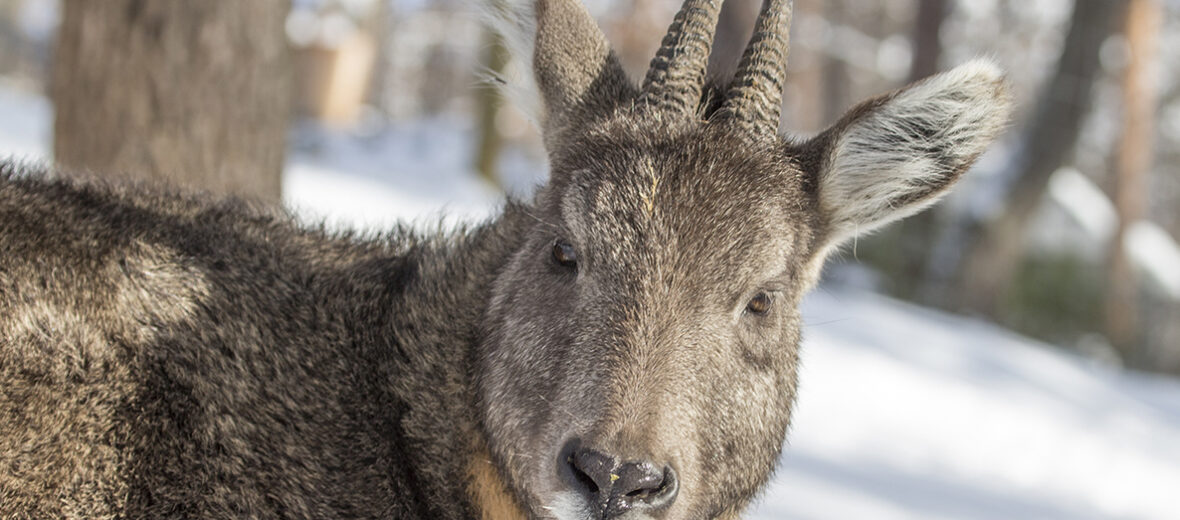
The goral is a critter that looks like a cross between a goat and an antelope. There are 4 known species that can be found in China, India, and Nepal. They prefer sparsely vegetated, rocky, dry, steep mountains with an abundance of cliffs. The various species are listed as Near Threatened to Vulnerable by the IUCN. This is due to hunting, trapping, habitat destruction, extermination for traditional medicine, and general human interference.
First the Stats…
Scientific name: Naemorhedus
Weight: Up to 88 lbs.
Length: Up to 51 inches
Height: Up to 31 inches
Lifespan: Up to 17 years
Now on to the Facts!
1.) Gorals are social critters that dwell in herds of up to 12 individuals.
2.) Herds typically consist of females, kids, and younger males. Older males are usually solitary; only coming together to breed.
3.) They are predominantly diurnal (active during the day). However, they have also been seen later in the evening (nocturnal) and on overcast days, they tend to be cathemeral (active both day and night).
4.) The goral will usually try to avoid traversing in snow deeper than 14 inches as this makes traveling challenging for them as well as making it easier for predators to pick them off.
5.) When faced with a predator, they will stomp their feet and make a wheezing alarm call.
But wait, there’s more on the goral!
6.) A group of gorals is called a drove, flock, herd, tribe, trip, or trippe.
7.) Gorals graze on grasses, nuts, fruits, woody material, leaves, and twigs. This makes them herbivores (eat plant matter).
Did you know…?
Gorals can leap up to 8 feet, horizontally, in order to avoid predation!
8.) Females undergo up to a 230 day gestation (pregnancy) that yields up to 3 kids, but typically 1 – 2 is the average.
9.) Lynx, snow leopards, tigers, wolves, dholes, and jackals all prey on gorals.
10.) Both males and females have horns that curve backwards. The male’s horns are longer (up to 9 inches), where the female’s get only 7.5 inches.
But wait, there’s still more on the goral!
11.) Being ruminants, these creatures have a 4 chambered stomach. Like cows. They will also chew their cud. This means they will regurgitate their meal so they can chew it further. This aids indigestion of the sometimes tough to eat food.
12.) To avoid sight hunters, a goral will sometimes lie motionless in the grass; almost playing dead.
13.) Males tend to be territorial and defend an area of approximately .15 of a square mile.
Now a Short Goral Video!
Be sure to share & comment below! Also, check out the Critter Science YouTube channel. Videos added frequently!
Want to suggest a critter for me to write about? Let me know here.



